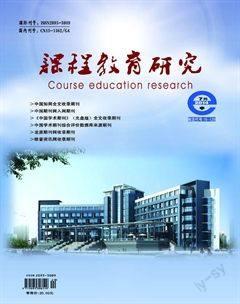Teaching Grammar in a Communicative Approach
繆杉莎 謝銀勛
【Abstract】This paper focused on the role of grammar in language teaching. In the first analysed the role of grammar in communicative approach, and then it emphasized the importance of grammar teaching.
【Key words】grammar, communicative, L1, L2
【中圖分類號(hào)】G71 【文獻(xiàn)標(biāo)識(shí)碼】A 【文章編號(hào)】2095-3089(2014)07-0130-01 There have been enormous interests in Communicative Language Learning, the development of communicative language explicit grammar teaching has a lower profile. The role of grammar in language teaching (Both L1 and L2) has become a matter of debate. In sometimes argued that grammar is not important in a communicative approach to language, the communicative competence rests on a set of composite skills, one of which is grammatical:
As Michael Canale and Merrill Swain state that (1980) communicative ability is at least composed by strategies competence which can be seen as grammatical competence and communicative strategies. Also there is no strong theoretical motivation to indicate that grammatical competence is more or less fundamental for successful communication than sociolinguistics or strategies competence (Cook, 1991, p.10).
L2 learners are attempting to communicative through a language that is not their own. It is different from children learning a first language where mental and social develop go hand in hand with language. All strategies rely on the speaker trying to solve the through the L2, a second overall type of communication strategy is fall back on the L1 such as translation from L1 and appearance of assistance and so on. As well as communicative competence, native speakers also posses knowledge of how uses language. The view of grammar as knowledge treats it as sometimes stored unconsciously in the mind – the native speakers competence. All of native speakers know the grammar of their language in this sense without benefit of study. Many people speak their mother language, native language without having studied its grammar. For example, children start to speak before they never study grammar, but they even can know the word grammar. When L2 learners learn a foreign language, grammar can help leaner to learn a language more quickly and more efficiently.
The textbook of grammar provides some exercises to make EFL (English as a Foreign Language) learners more conscious of their predilections, for instance suggesting ways for the students to discover grammatical rules themselves. Increasing awareness of language may have many educational advantages in a broad sense. It has no particular licence from the types of grammar. A textbook in grammar for learners must be resolved several problems. The language presented must go beyond practice to enable learners to express learners ideas and enable learners, step by step, to be confident enough to try to use the language for their own purpose and to make progress in variety of activities and problems. These textbook will help learner to understanding of structures so that learner can understand other utterances in the target language, an example:
☆the word
endings, etc,
☆the sentences
how words fit together to form sentences
the functions of sentence:
promising, warning, informing and ordering
Knowledge of grammar is though by many to be central area of language system, as teachers and methodologists become more aware of L2 learning research.
Grammar is an important skill, being the system of rules for the importation of correct sentences and it is essential that learners are able both understand and use the rules of grammar. The learner must be able to use the rules of grammar. In discussing grammar in L2 teaching, it is not possible to considering the role of L1, it is also good news for grammar, since it will be viewed in its natural home, e.g. as a part of communication and not as something remote from communication. Teacher does not go far enough in preparing learners to press their grammatical resources into communicative use.
Reference
[1]Canale,M and Swain, M.(1980). “Theoretical Bases of Communicative Approaches to Second Language Learning and Testing.” Applied Linguistics No.1, 147.
[2]Cook, V. (1991), Second Language Learning and Language Teaching, Edward Arnold, Great Britain.

